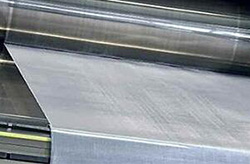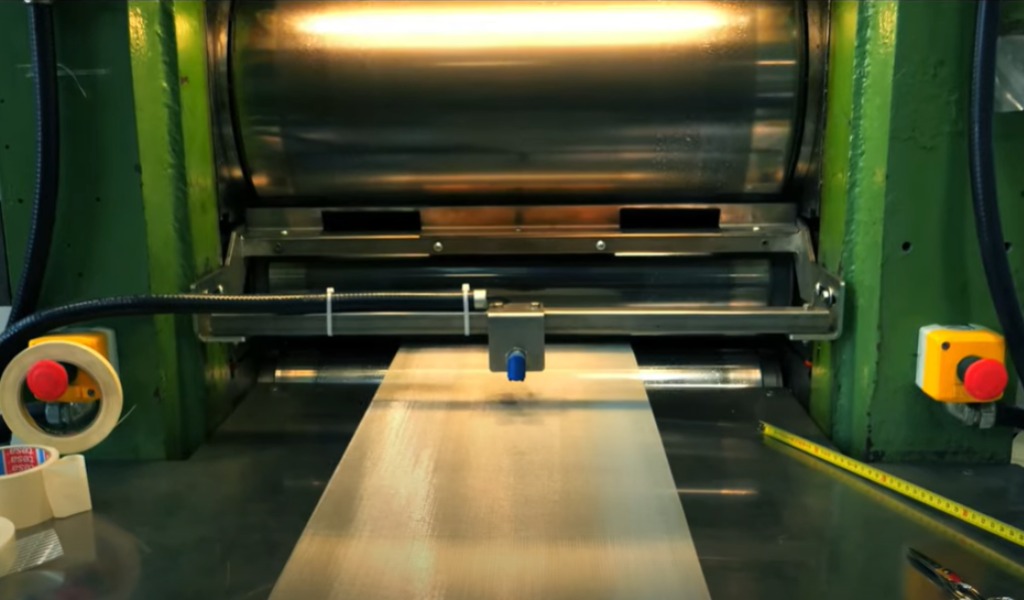Calendering Wire Mesh: Definition, Process, and Benefits
Wire mesh is undoubtedly one of the most versatile screening/filtration media on the market. Almost every aspect of wire mesh can be customized to accommodate an endless list of applications, from the wire diameter to the alloy.
But what really allows you to unlock the material's full potential are post-weaving techniques called value-added processes that do just that: increase the value your wire mesh can provide. One of the more common value-added processes used is calendering.
With this in mind, what exactly is calendering, and when should you be calendering your wire mesh?
W.S. Tyler has produced tailor-made wire mesh solutions for over 150 years, helping customers across dozens of industries leverage wire mesh, innovate their processes, and drive revenue.
With that, this article was written to help you understand the calendering process so you build custom wire mesh solutions based on informed decisions. You will learn the following:
- The definition of calendered wire mesh
- The ins and outs of the calendering process
- The benefits of having your mesh calendered
- The drawbacks of having your mesh calendered
What Does It Mean to Calender Wire Mesh?
Wire mesh is a material that is comprised of hundreds of wires that are woven together. The weaving process used forms knuckles at each wire intersection, causing an uneven surface.

Calendering is the value-added process in which the knuckles at each wire intersection are mechanically flattened. As a result, you are left with a wire mesh weave with a smoother surface.
What Does It Look Like to Calender Wire Mesh?
Calendering wire mesh involves running your wire mesh between two rollers, sandwiching the mesh to project pressure and heat onto the knuckles. The calendering process is calculated and heavily monitored, as the parameters must be customized to accommodate things like the thickness of the weave and the level of flattening desired.
With that, the process usually starts with the wire mesh undergoing a thorough quality control inspection. This prevents any faults or imperfections from affecting the process.
The wire mesh supplier will then set up the calendering machine to accommodate the wire mesh specifications being calendered. Parameters such as pressure output, heat temperature, and roller speed are all customized on a case-by-case basis.
Once the calendering machine is ready, an operator feeds the wire mesh through the roller. These rollers apply the predetermined heat and pressure to the mesh, flattening the knuckles.
The mesh will be fed through the calendering machine until the desired profile is achieved.
After being calendered, the wire mesh will undergo another quality control inspection. This inspection process ensures the calendered mesh adheres to the desired result.
Why Calender Wire Mesh?
Calendering presents several benefits that can improve the value your wire mesh delivers. The more notable benefits include improved performance, application versatility, and improved consistency.
Improved Performance
Calendering can be used to improve the pore opening rigidity of your wire mesh, resulting in more precise performance. Wire mesh can also be calendered to enhance its overall strength and durability, allowing it to perform in high-capacity applications and combat wear for longer.
Application Versatility
Calendered mesh can be used for virtually every application non-calendered mesh is used for. That said, non-calendered mesh can't be used in place of calender mesh when the application calls for a screening media with a smooth surface.
In other words, calendered wire mesh is typically seen as a more versatile solution.
Common Applications for Calendered Wire Mesh:
- Screen Printing
- Air filtration
- Automotive filters
- Gas filtration
- Insect Protection Screens
- Medical filtration
- Liquid Filtration
Improved Consistency
As calendering improves the rigidity of the pore openings, it helps ensure these openings remain uniform. This, in addition to the serval quality checks during the calendering process, helps create a wire mesh solution that delivers accurate and repeatable results.
What Are the Disadvantages of Calendred Wire Mesh?
While calendering can add tremendous versatility to woven wire mesh, having your mesh calendered also presents some disadvantages of note. First and foremost, it is known to hinder the flexibility of wire mesh is known for.
As the rigidity of the pore openings increases when calendered, so is the overall stiffness of the weave. The resulting effect is a wire mesh weave that is harder to form, making it harder to be fabricated into complex filter components.
To gain a better idea of why the flexibility of your mesh is critical to the forming process, read the following article:
To that end, calendering can alter the opening size of the mesh, making it harder to calender finer mesh specifications. For this reason, the mesh size range for calendered solutions is limited.
This correlates with the fact that calendering can hinder the airflow capacity of these finer mesh specifications.
And naturally, as it is a value-added process that is not a part of the standard weaving process, having your wire mesh calendered will increases the cost of your wire mesh order.
Get To Know What Value-Added Processes Are Available to You
Calendering is a value-added process used to flatten the knuckles created during the wire weaving process. It can be used to improve the performance, versatility, and consistency of your wire mesh.
But at the same time, it can limit the opening size availability, flexibility, and airflow of your mesh while also driving the cost of your order.
But as mentioned before, calendering is just one of many value-added processes. Producing wire mesh solutions that deliver true value requires you to understand the other value-added processes.
This way, you can handpick the ones you need to fabricate wire mesh that you can rely on.
Having spent the past 150 developing proprietary wire weaving techniques for over 150 years, W.S. Tyler wants you to feel as if we are an extension of your organization, serving as your wire weaving department.
Read the article below to gain insight into what value-added processes you should be applying to your next wire mesh order:
About Ronnie Brown
Ronnie is the Content Writer for W.S. Tyler and has four years of experience as a professional writer. He strives to expand his knowledge on all things particle analysis and woven wire mesh to leverage his exceptional writing and graphic design skills, creating a one-of-a-kind experience for customers.




